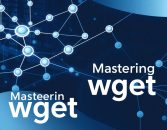
The Digital Frontier: Understanding Proxy Networks and Web Scraping Ecosystems
In our hyperconnected world, information represents the most valuable currency. Residential proxies and web scraping technologies have emerged as sophisticated instruments transforming how organizations gather, process, and leverage digital intelligence. This isn‘t merely a technological trend—it‘s a fundamental revolution in how we understand, interact with, and extract value from global digital landscapes.
The Evolution of Digital Data Acquisition
Imagine standing at the intersection of technology, strategy, and global communication. Residential proxies are more than technical infrastructure—they‘re complex networks enabling unprecedented access to distributed digital information. These sophisticated systems represent a nuanced dance between technological capability, ethical considerations, and strategic intelligence gathering.
When we discuss residential proxies, we‘re exploring far more than simple IP routing mechanisms. We‘re examining intricate global communication networks that allow organizations to transcend traditional geographical limitations, gathering insights with remarkable precision and authenticity.
Technological Architecture: How Residential Proxies Function
Modern residential proxy networks represent highly sophisticated technological ecosystems. Unlike traditional datacenter proxies, residential proxies leverage real-world internet connections from actual residential environments. This fundamental difference provides extraordinary advantages in digital intelligence gathering.
The technical infrastructure supporting residential proxies involves complex routing algorithms, intelligent IP rotation mechanisms, and advanced authentication protocols. Each proxy connection represents a carefully orchestrated interaction between multiple technological systems, ensuring anonymity, reliability, and minimal detection risk.
Intelligent Routing and IP Diversity
Sophisticated proxy networks dynamically manage IP addresses across global regions, creating intricate routing pathways that mimic genuine user behaviors. These systems don‘t simply redirect traffic—they create intelligent, adaptive communication channels that respond dynamically to changing digital environments.
By leveraging millions of residential IP addresses worldwide, proxy networks can generate incredibly nuanced digital footprints. Organizations can effectively simulate localized internet experiences, accessing region-specific content with unprecedented accuracy.
Market Dynamics and Economic Implications
The residential proxy market represents a rapidly expanding technological ecosystem. Current projections suggest the global market could reach [estimated] \$12 billion by 2028, reflecting exponential growth driven by artificial intelligence, machine learning, and advanced data intelligence requirements.
Organizations across multiple sectors—from e-commerce and market research to cybersecurity and academic institutions—are increasingly recognizing residential proxies as critical strategic assets. These aren‘t merely technical tools but sophisticated intelligence gathering mechanisms that provide competitive advantages.
Emerging Use Cases and Industry Applications
While early proxy applications focused primarily on basic web scraping, contemporary use cases demonstrate remarkable complexity:
Artificial intelligence training requires massive, diverse datasets that can only be efficiently gathered through advanced proxy networks. Machine learning models depend on comprehensive, globally sourced information to develop sophisticated understanding and predictive capabilities.
Cybersecurity teams utilize residential proxies to simulate potential attack vectors, understanding digital vulnerabilities from multiple geographic perspectives. By creating complex, distributed observation points, security professionals can develop more robust defensive strategies.
Ethical Considerations and Regulatory Landscapes
As residential proxy technologies advance, ethical frameworks become increasingly critical. The Ethical Web Data Collection Initiative (EWDCI) represents an important industry effort to establish responsible data gathering standards.
Ethical proxy usage requires transparent methodologies, user consent mechanisms, and strict adherence to regional privacy regulations. This isn‘t simply about technological capability—it‘s about maintaining trust within global digital ecosystems.
Navigating Complex Legal Environments
Different global regions present unique regulatory challenges. European Union‘s General Data Protection Regulation (GDPR), California Consumer Privacy Act (CCPA), and emerging international privacy frameworks create complex compliance landscapes for proxy network operators.
Successful proxy providers must develop sophisticated legal intelligence capabilities, continuously adapting to evolving regulatory environments while maintaining technological innovation.
Technological Challenges and Innovation Pathways
The ongoing technological arms race between web scraping technologies and anti-scraping mechanisms drives continuous innovation. Websites develop increasingly complex detection algorithms, while proxy networks create more sophisticated evasion techniques.
Machine learning plays a crucial role in this dynamic environment. Advanced algorithms can now predict and adapt to emerging anti-scraping technologies, creating more resilient data collection strategies.
Future Technological Trajectories
Emerging technologies like blockchain and distributed computing are likely to revolutionize residential proxy networks. Decentralized verification mechanisms could provide unprecedented transparency and reliability in IP sourcing and routing.
Quantum computing might introduce entirely new paradigms for network routing and data transmission, potentially transforming how residential proxy networks function at fundamental architectural levels.
Global Perspectives and Regional Variations
Residential proxy markets demonstrate fascinating regional variations. North American and European markets tend to emphasize compliance and technological sophistication, while emerging markets in Asia and Latin America often prioritize cost-effectiveness and rapid technological adaptation.
Understanding these nuanced regional differences becomes critical for organizations developing global proxy strategies.
Conclusion: The Strategic Intelligence Ecosystem
Residential proxies represent far more than technical infrastructure—they‘re sophisticated instruments of global digital intelligence. As our world becomes increasingly interconnected, these technologies will play pivotal roles in how organizations understand, interact with, and extract value from digital landscapes.
The future belongs to those who can navigate complex technological ecosystems with intelligence, ethics, and strategic vision.






